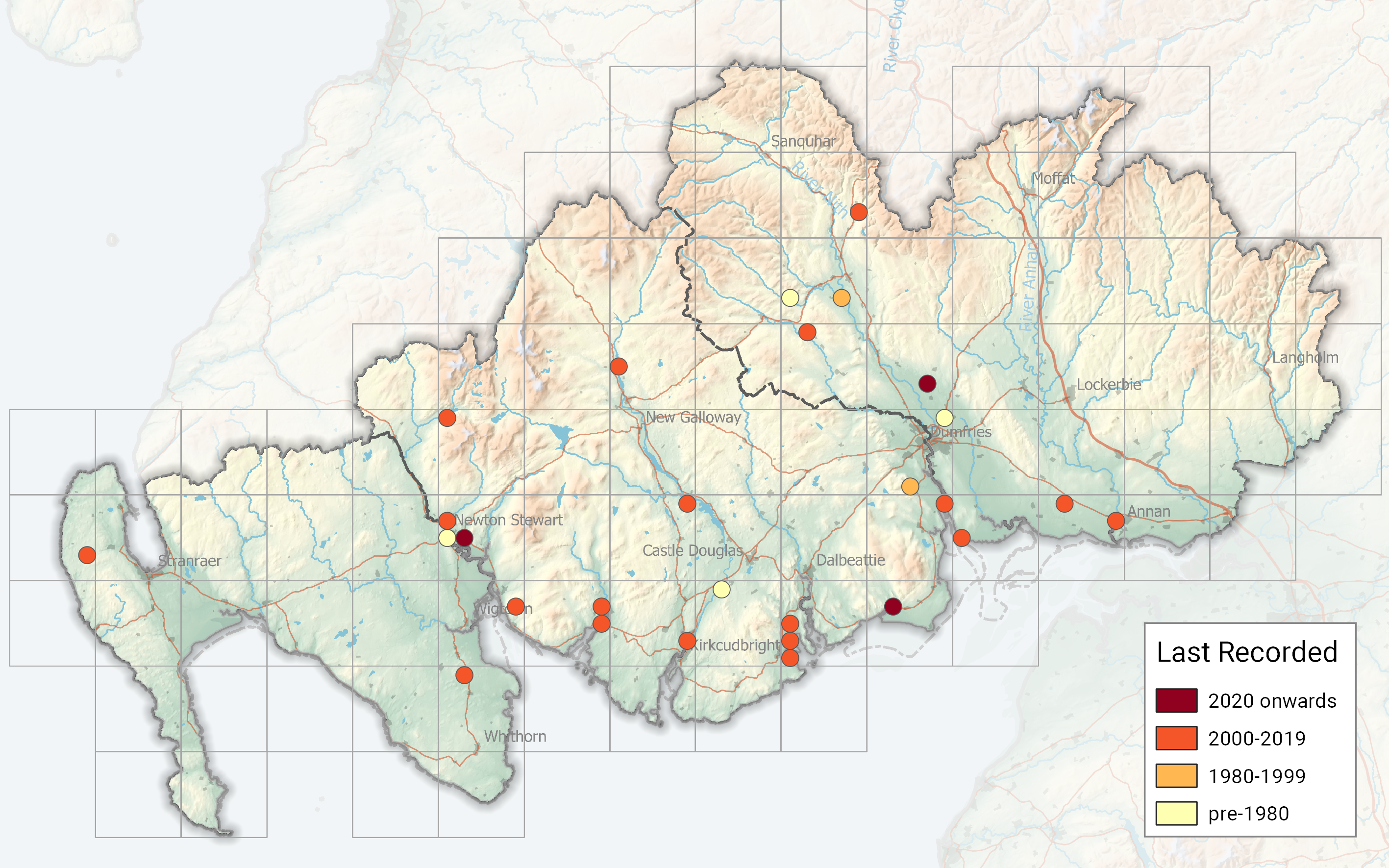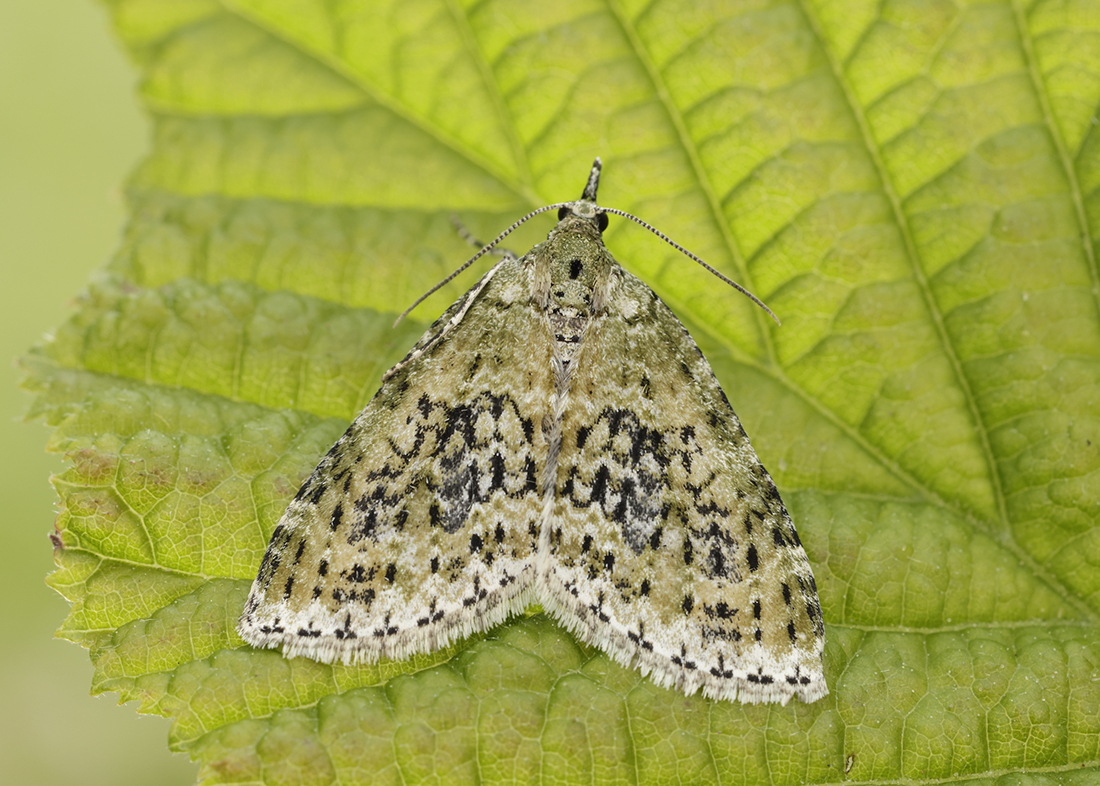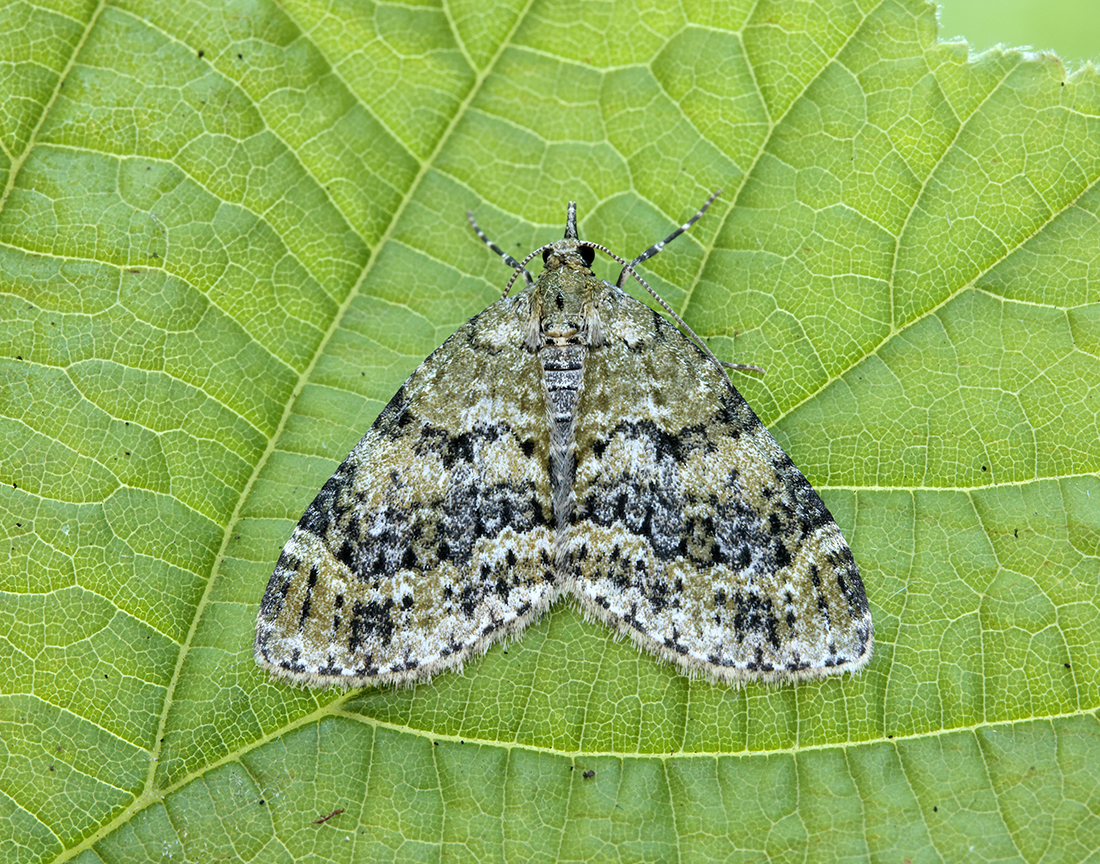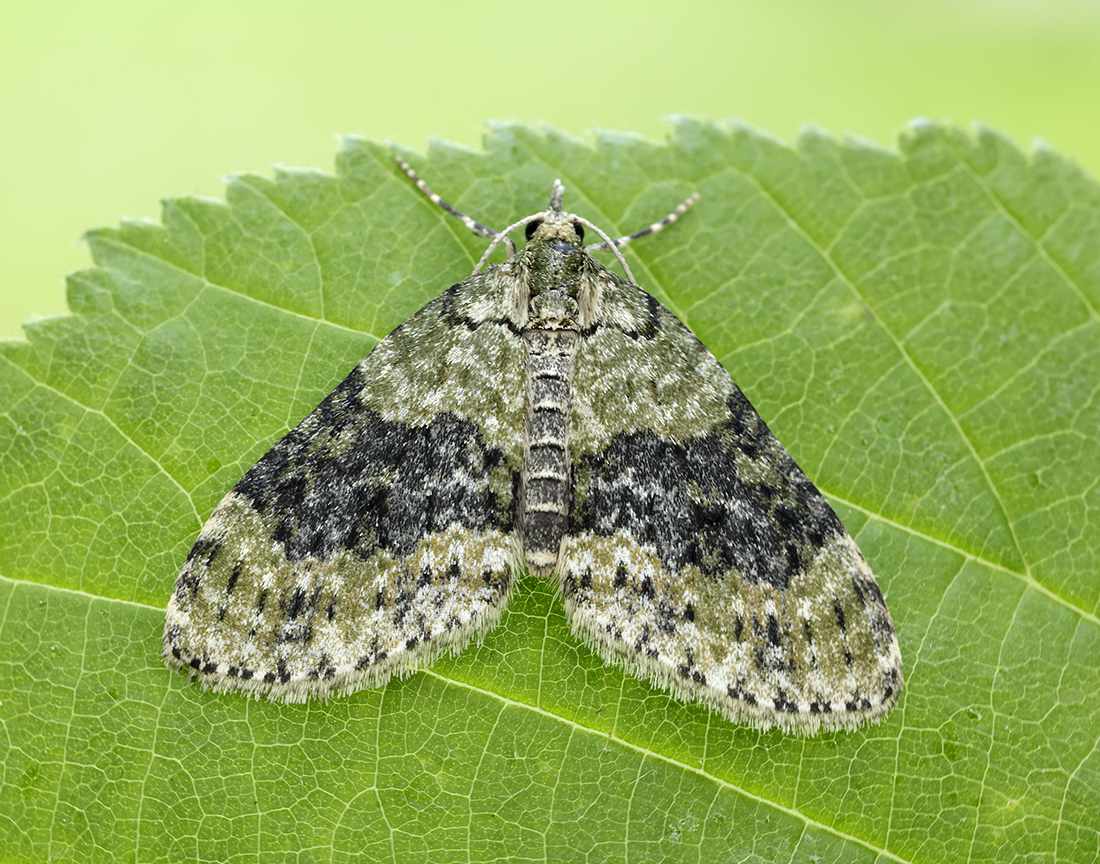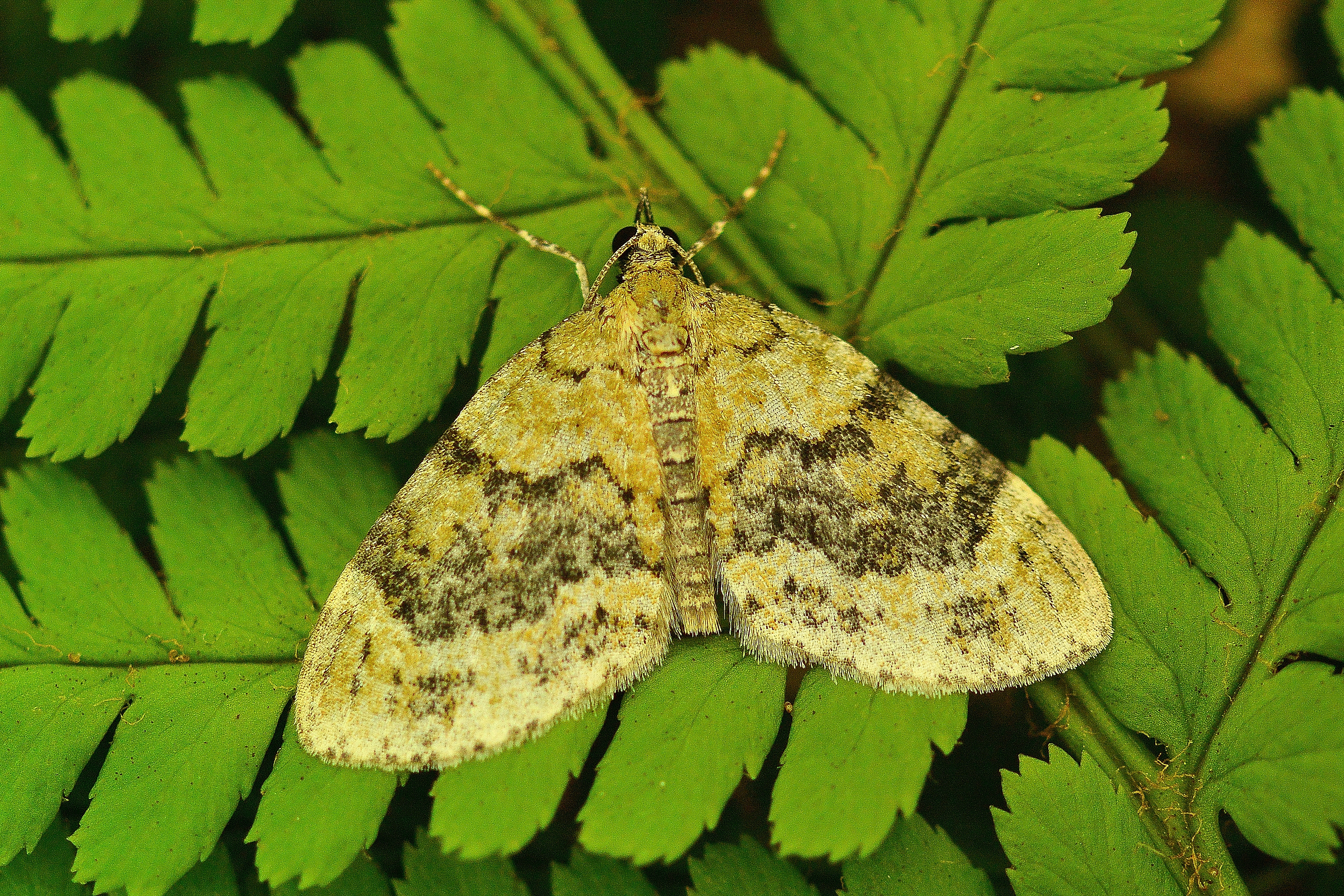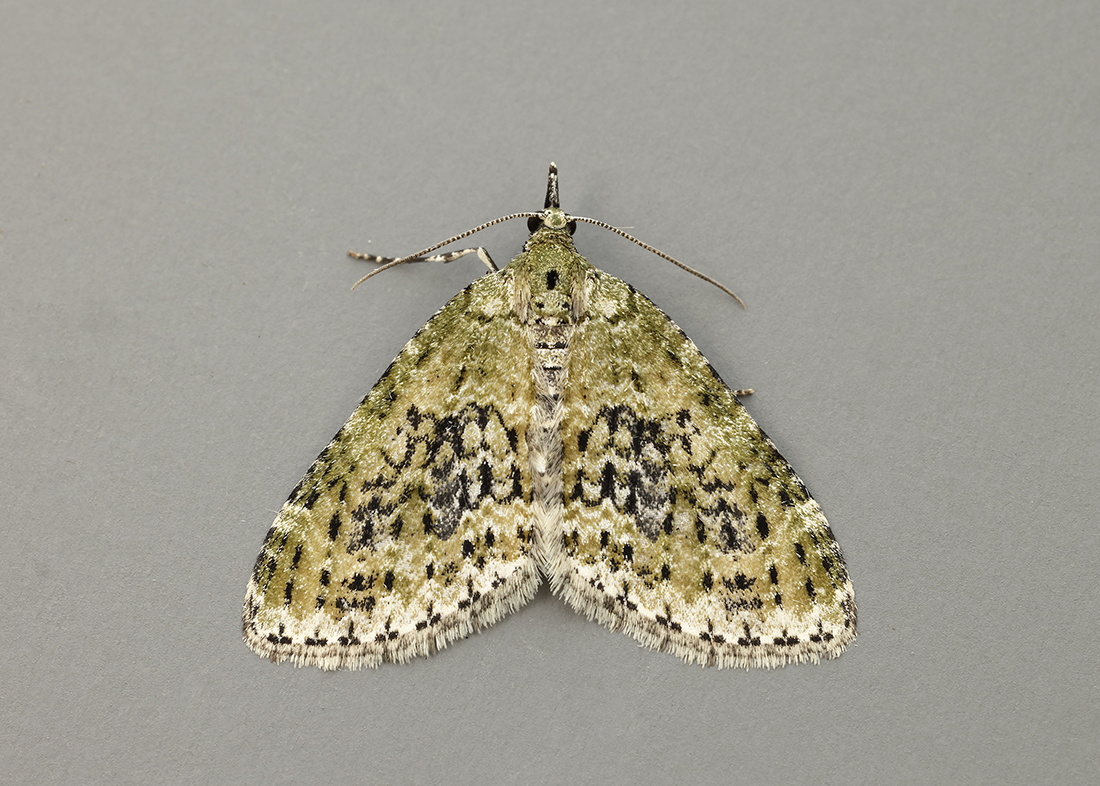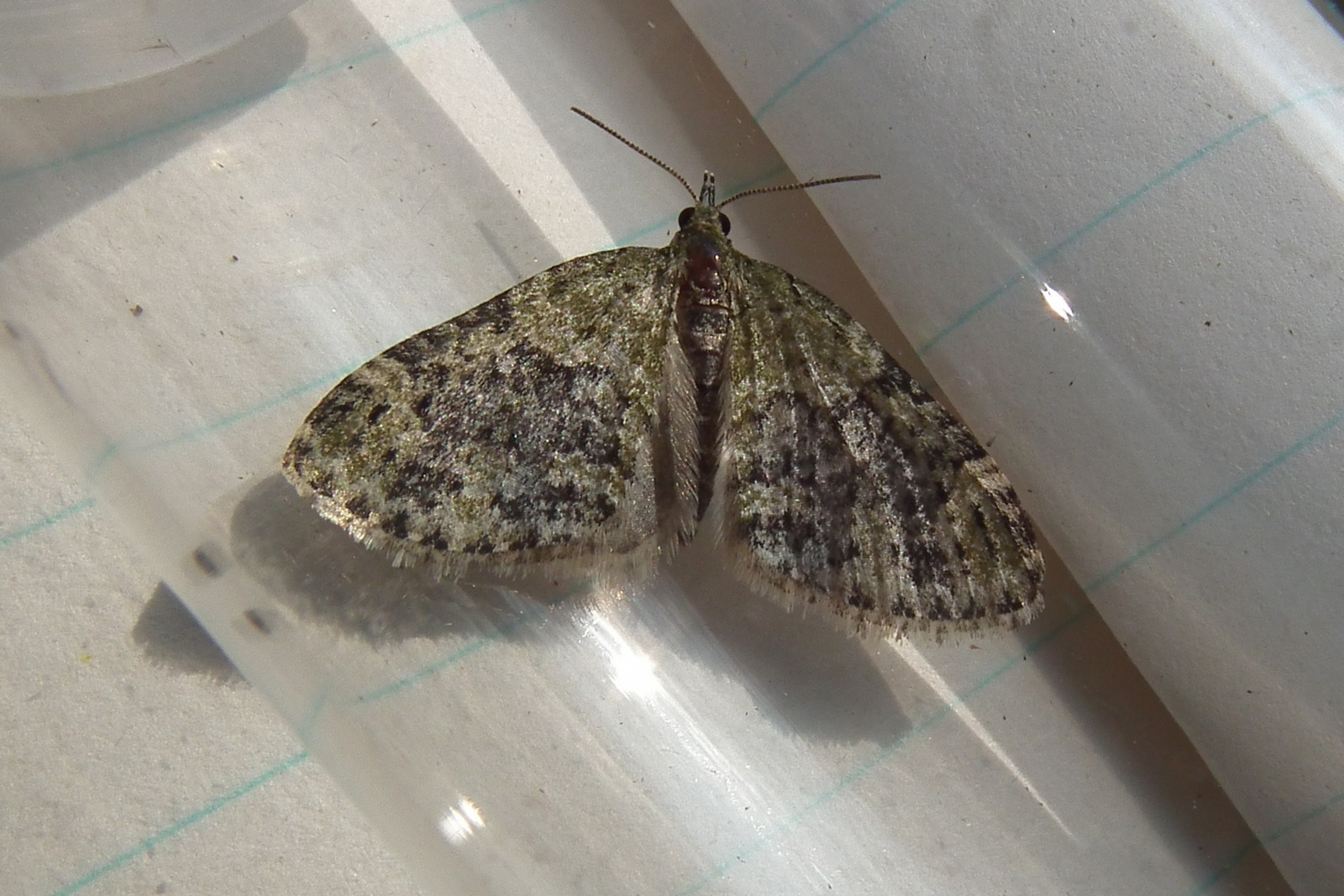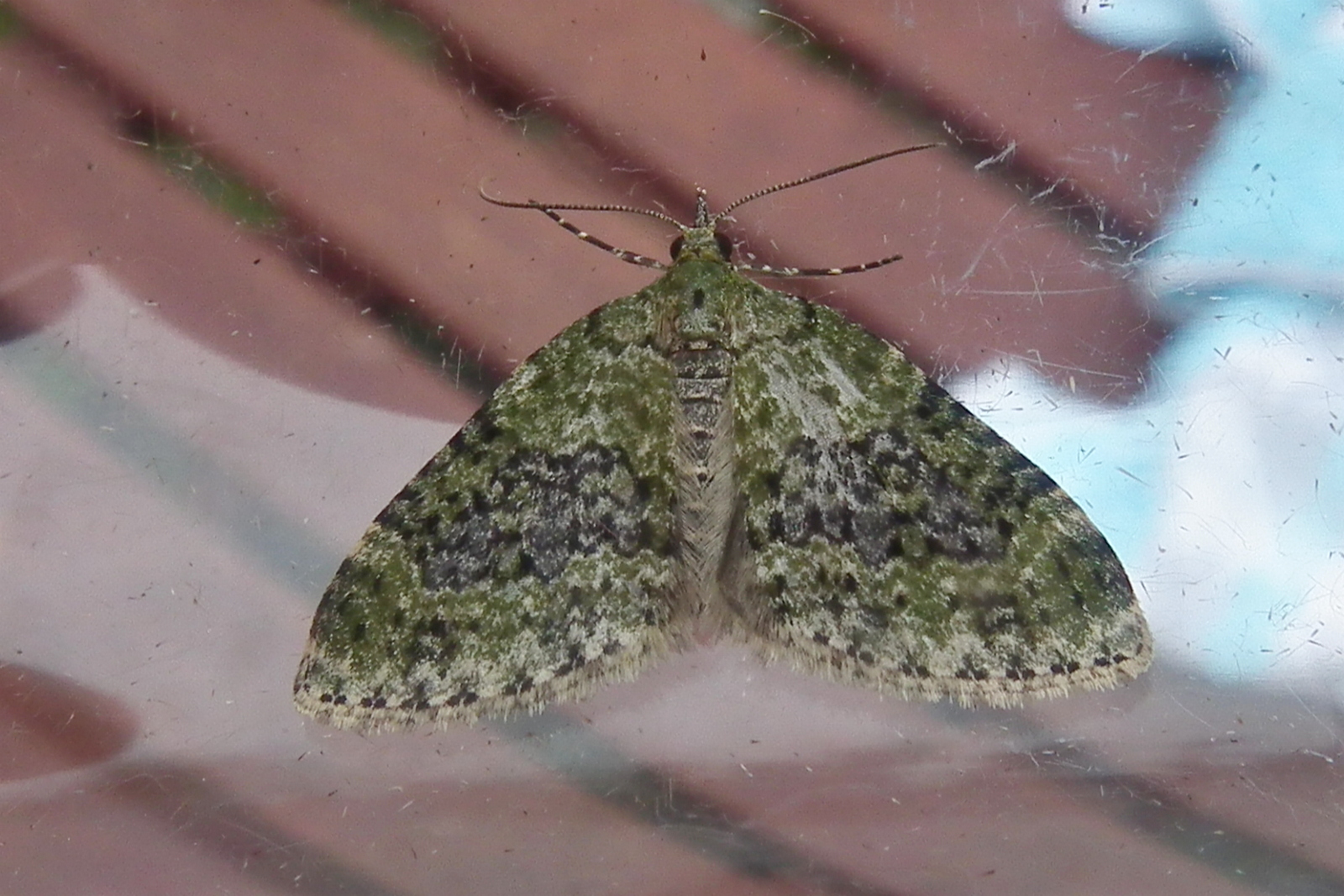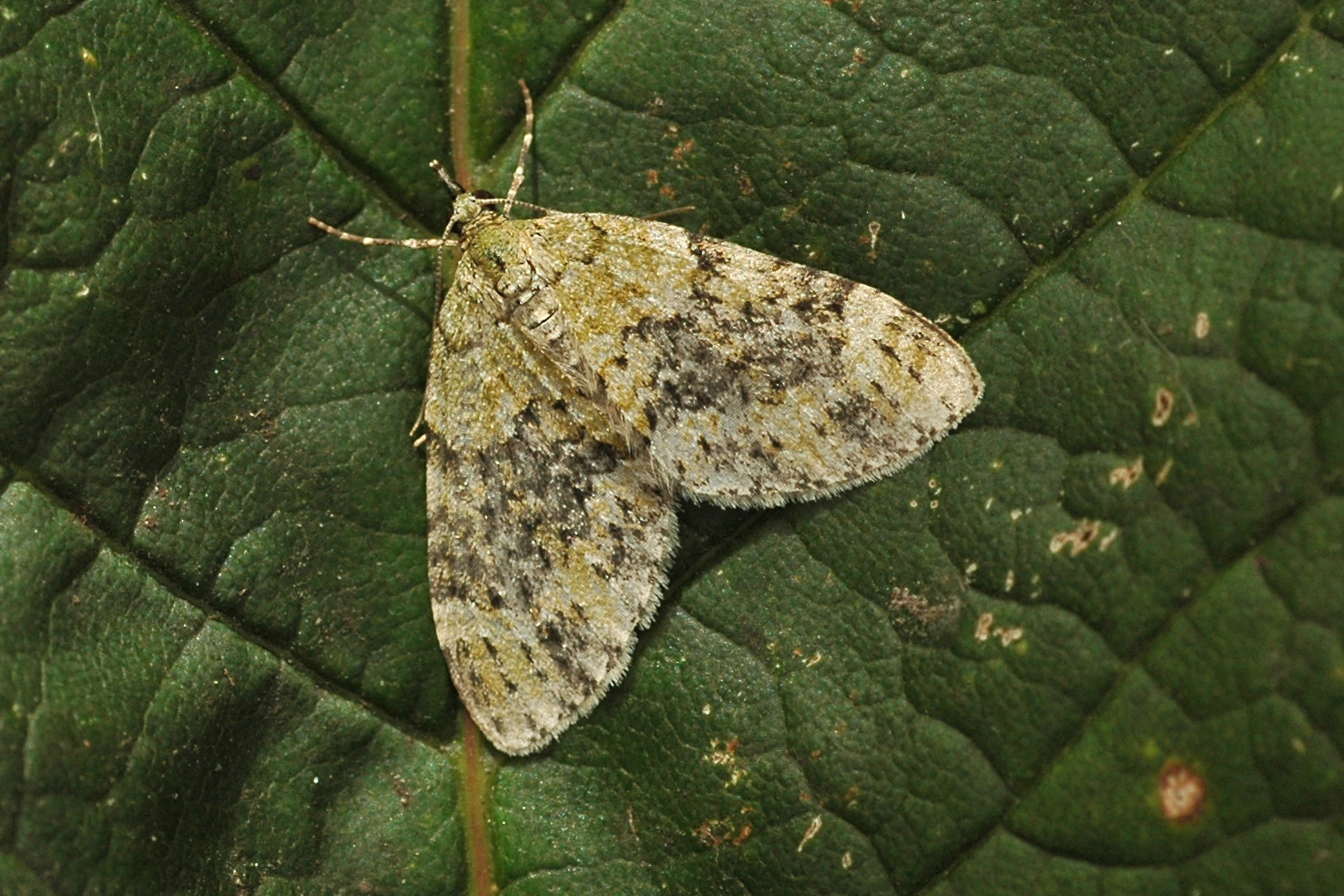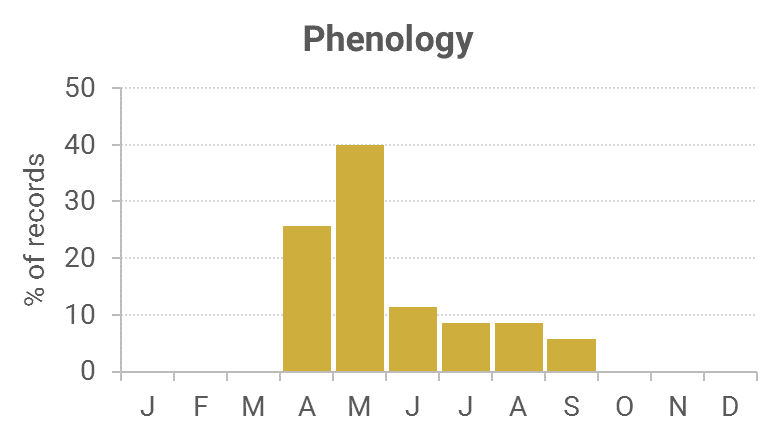Identification
Quite distinctive. Freshly emerged adults are olive-green, but this quickly fades to a yellowish-green, which then can lead to misidentification. This quite distinctive moth has two generations, late April to early June and early August to mid-September.
Recording method
Comes to light in small numbers.
Life cycle
Two generations. Overwinters as a pupa. Larvae present June to July, again, September to October.
Larval foodplants
Dogwood, Guelder-rose, Hawthorn, Holly and Ivy.
Habitat
A broadleaved woodland species with scattered Holly.
History
First recorded for Dumfries and Galloway in 1862 for VC72 at Tinwald Downs, Dumfries by Lennon who stated it was ‘not common’, in 1976 for VC74 at the Newton Stewart Rothamsted light trap and in 1977 for VC73 at the Bridge of Dee Rothamsted light trap.

